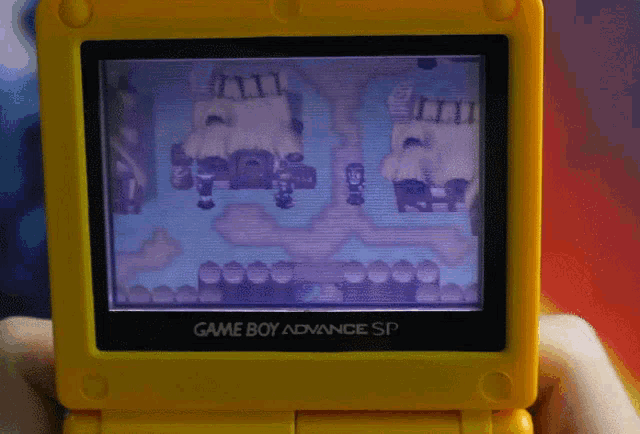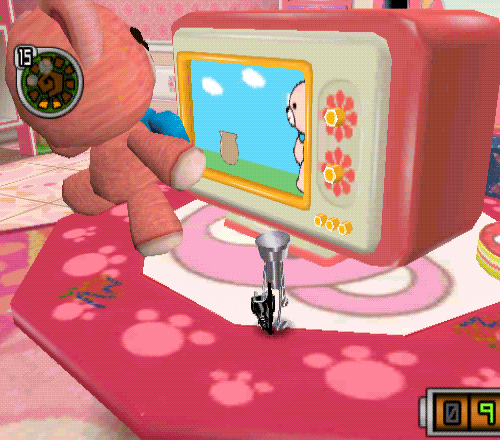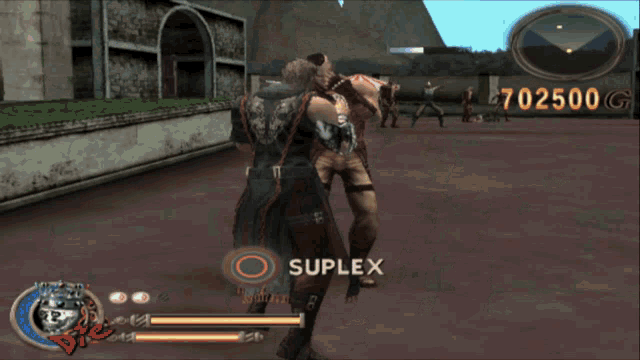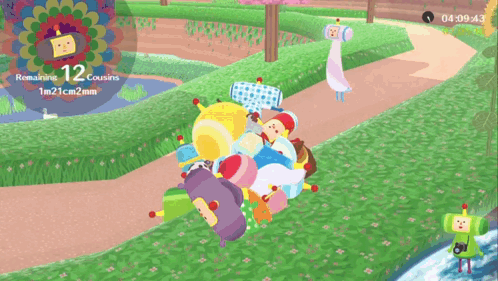
So Why?
They are fun, end of story.
Okay, but seriously, every time someone says “games just aren’t fun like they used to be,” I feel like I’m going crazy. It’s just become one of those phrases that sounds deep until you realize it mostly just just fluff. There’s this collective nostalgia that floats around gaming culture, that somewhere along the way we lost the spark, but that kind of thinking flattens both history and experience.
When you’re young and still forming your taste, everything feels like the best thing in the world. The first time you play Ocarina of Time or Halo or whatever your personal origin story was, it rearranges your idea of what’s possible. It’s not just that the game was good, it’s that your brain was still learning what a game even could be. That rush, that chemical “oh my god!”, is discovery, not the quality. Once you’ve seen enough, the surprises wear off. You start noticing design language, predict systems, and understand pacing tricks. The magic doesn’t disappear, it just becomes harder to shock yourself with it.
It’s easier to project that loss onto the industry than to admit we’ve changed. There’s comfort in pretending that fun was something developers used to do better, instead of something we used to feel more easily. Of course there are corporate trends that dull creativity, but they coexist with more variety than ever before, weird little games that couldn’t have existed in the 2000s, made by one or two people with an idea. If anything, we’re overwhelmed by choice now. It’s not that fun is gone; it’s that it’s scattered and buried under sheer abundance.
I think part of why that “games aren’t fun anymore” take bothers me so much is because it’s lazy grief. It mistakes nostalgia for some invisible evidence. It refuses to evolve with the medium, and to let fun mean something other than childhood joy. And that kind of thinking locks you out of everything new that’s still worth discovering. You can still find fun but you have to go looking for it, and you have to let it surprise you again.


Fun as Discovery
When people talk about the so called “the golden age” of gaming, what they’re usually remembering isn’t the hardware or the polygons, it’s the sense of discovery that came from how developers used to think about fun. Back then, teams were smaller, budgets were tighter, and every worker wasn’t worried they were going to all be fired the next day because their CEO decided to cut corners, because profits.
Every system came from play. F.L.U.D.D from Mario Sunshine wasn’t born from a marketing brief about innovation, it was Miyamoto’s team literally asking what happens if Mario can shoot water and slide around. The “fun” wasn’t a theoretical thing, it was physical. The same goes for Pikmin’s strange microcosm of strategy and cuteness, or F-Zero GX’s crazy speed that forced your hands and eyes into sync in a way that felt more like surfing than driving. There was a curiosity to that era that came from not yet knowing what was possible, and it gave games a personality modern polish sometimes just can’t get.
It’s easy to romanticize this stuff, because the truth is it was messy. Balance was often an afterthought, tutorials were opaque, and interfaces were clunky. Yet within that friction was a kind of magic: the belief that discovery itself was the reward, and that if you gave players something odd or surprising, they’d find the joy on their own instead of being guided toward it.

A game wasn’t valuable because it was long or efficient, but because it felt good to mess with. Even when systems were simple, they invited curiosity, and you’d push against the edges of their rules just to see what would happen. That’s what Keita Takahashi captured with Katamari Damacy: joy through absurdity, and through scale and silliness.
That mindset hasn’t disappeared, but it’s rarer now. The industry grew up, got flooded with capital, and wanted their money back and more on everything. But before the gears went into hyperdrive, and “player experience” was a department, fun was a verb. And every time a developer treated play as an experiment rather than a product, that shit had a kind of honesty you could feel in your hands, long after you turned the console off.

The Parasite
It’s impossible to talk about why games feel strained without talking about the machine that makes them. The problem isn’t that developers have lost passion or that creativity’s run out, but it’s that the people who make games are working under a system that treats play like a commodity instead of a craft. Capitalism doesn’t kill fun in some direct, dramatic way; it does it slowly, by exhausting the people who make it possible.
The structure of big studios now looks less like a workshop and more like a production line. Budgets are astronomical, timelines are rigid, and the margin for failure is fucking microscopic. You can’t prototype weird ideas when one delay might sink the fiscal quarter, so you end up with design-by-committee, sequels greenlit by algorithms, and games that feel like they were changed to meet shareholder expectations. Fun in that context stops being an emotion and turns into a word on a slide deck that means “players are still clicking the button.”
Developers feel that shit every day. The crunch cycles, the layoffs, the terror that a single flop could wipe out a team. Creativity doesn’t survive easily in fear, and you can see it in how risk-averse AAA design has become; how often studios cling to nostalgia or familiar IP just to justify another budget approval. Even the best designers can’t build wonder in a climate that punishes curiosity. Fun thrives on freedom, and being able to try something dumb and see if it sparks. But there’s no room for dumb anymore when every idea needs to be predicted and monetized before it exists.
Indie scenes get shown as the solution, and yeah, they’re often where real experimentation happens. But even there, the same market forces creep in. There’s visibility algorithms, rising development costs, and platforms taking massive cuts. And that’s why so many games feel like they’re suffocating under invisible pressure. The fun hasn’t disappeared, but it’s trapped under the weight of late stage capitalism.
If we want games to feel alive again, the question isn’t “how do we make them fun?” but “how do we make space for people to make joy without being crushed by the system that sells it?” Because fun can’t be built under permanent exhaustion. It needs room to take risks without fear. The only way to make games lighter again is to lift some of that weight off the people building them.

Friction, Failure and Flow
Now let’s understand what “fun” even is. If you strip it down to its more raw form, it’s never just comfort. It’s friction, a little push and pull between what you can do and what you can’t yet. Without resistance, it just falls flat. You see it in how the most memorable games tend to be the ones that made you struggle a bit, that made your hands ache or your mind spiral until something clicked. Frustration, when handled right, isn’t the opposite of fun; it’s the structure that gives it shape.
This is why a game like Celeste feels so cathartic even as it makes you die hundreds of times. It’s not just about reflexes or mastery, it’s more about how each failure becomes a kind of micro-lesson, and rhythm between control and surrender. The same is true of Dark Souls, where the tension between punishment and patience transforms difficulty into a dialogue. You die, you learn, you adapt, and suddenly what felt cruel turns into something more personal. The reward isn’t progress, it’s presence. You have to be there, paying attention, and negotiating with the system instead of coasting through it.
That negotiation is what older design philosophies called flow, the state where challenge and ability line up so tightly that time dissolves. Flow isn’t comfort; it’s focus. And what makes it addictive isn’t the reward at the end, but the feeling of being suspended between chaos and control. Friction creates that sweet spot where you’re not bored, just locked in. A lot of modern design mistakes friction for inconvenience and sands it down until nothing’s left to hold onto. But when every surface is smooth, there’s nothing to grip.
Friction doesn’t always mean punishment, though. In slower or cozier games, it can show up as other things instead of difficulty, like the tiny delays, waiting, and repetition. Think of Animal Crossing, or farming games like Stardew Valley, where the friction comes from time itself. You plant, you wait, you water, you come back later. The fun isn’t in efficiency, but rhythm. That slow pacing lets the game give itself time to breathe, and in that breathing space, you start filling the silence with your own meaning.
Good designers understand that fun isn’t about erasing friction but shaping it. Every jump, cooldown, and awkward pause is a kind of trust exercise between you and the system. If the game respects your effort, you’ll meet it halfway. Fun is not the absence of struggle but the balance of it, and the point where effort feels earned and possibility still feels open.


The Fun Variety Box
There’s different varieties of fun, depending on what you’re looking for. There’s the kinetic fun of Neon White, where you’re basically speedrunning your own muscle memory. The meditative fun of Tetris Effect, where you’re basically in a trance. The fun of a Goose Game or Pizza Tower, where the joy comes from the chaos from breaking rules and seeing what happens. And then there’s the melancholy fun of Outer Wilds or Season, where the pleasure isn’t in winning but in realizing that you can’t.
A game can make you laugh and still hurt you a little. It can bore you on purpose to make a point, and it can be beautiful and still kind of clunky. Fun is a feeling you arrive at rather than something injected into the design. It’s shaped by context - who you are, how tired you are, what you’ve already played. That’s why two people can play the same game and one calls it relaxing while the other calls it tedious. Fun’s subjective, because we are.
You can also see that fragmentation in how we play socially. Playing used to be mostly solitary, you in front of a screen, a controller in your hands, maybe a sibling yelling next to you. Now it’s collective, performative. Streaming, Discord calls, co-op chaos- games have become stages where fun is witnessed as much as felt. You’re sharing the energy, reacting, performing enjoyment for each other. It’s not inherently bad, community play has produced some of the most vibrant and spontaneous experiences ever, but it’s changed what “having fun” even means.
And somewhere in this sprawl, “serious” games have come into it too. Games about grief, identity, labor, queerness. They can be fun, but the fun comes from recognition, resonance, and the joy of being seen. That’s still play, just not the kind in dopamine spikes.
So no, fun isn’t gone. It’s just harder to pin down because it’s never been one encompassing thing. What we used to call fun is split into a language of moods, sensations, and meanings, and that’s probably the coolest thing. It means every game isn’t chasing the same high, it’s learning to express the whole spectrum of being human.

The Player as Co-Author
The longer games exist, the harder it is to pretend that “fun” lives entirely inside what a developer builds. These days, it lives in the negotiation between design and interpretation, between the rules laid down and the ones players rewrite. The player isn’t just the audience; they’re part of the authorship, and that change has turned fun into something less about consumption and more about collaboration.
Take the most popular games like Minecraft, Baldur’s Gate 3, Animal Crossing, or even Roblox; none of them tell you how to have fun, they hand you the tools and watch what happens. Fun emerges from ownership, and bending the system until it starts to reflect you. The same energy runs through modding scenes, speedrunning communities, or people who play The Sims like a melodrama. These players are rewriting the rules in public, and making meta-games out of interpretation. In that space, fun stops being an emotion and becomes a kind of authorship, kinda like a conversation between intent and invention.
That’s why it feels wrong to talk about “player agency” like it’s some bullet point feature. Agency isn’t just choosing dialogue options; it’s the creative act of finding meaning where none was placed. The Barthes idea of “the death of the author” fits here better than anywhere else - a game doesn’t really exist until someone plays it, and once they do, the meaning is yours.
But that freedom also brings a strange kind of pressure. When players can define their own fun endlessly, designers have to decide how much control to give away without losing coherence. Too much structure and the world feels closed; too little and it falls under its own openness. The fun comes from the friction between what the game allows and what the player dares to try.
In that sense, fun is a joint performance. You bring half of it, the designers bring the other half, and what happens in between is unique every time. It’s less about mastery and more about dialogue, it’s an unsaid understanding that play isn’t a product you buy, but an experience you build together.

Understanding Fun
After everything, you realize that fun was never the point, it was the proof. It’s the damn residue that appears when people are free enough to experiment, and design isn’t held back by fear or nostalgia or deadlines. What we’ve been calling a “fun problem” in games is really a context problem— a symptom of an industry that’s forgotten how to protect the conditions that make fun possible. You can’t manufacture it, and you definitely can’t optimize it; you can only create the space where it might happen.
That’s the heart of a fun, not endless joy, but curiosity without punishment. It’s the belief that players and developers both deserve a little slack to rediscover what makes games worth touching in the first place. Keita Takahashi always said delight is a form of trust, and that’s what this all comes down to. A game trusts you to explore, break its rules, and find your own rhythm. A developer trusts that not every idea needs to be proven by data. A community trusts that fun can look different for everyone and still be real.
But capitalism complicates that trust. It demands certainty, output, content; and these words kill the very fragility that makes play beautiful. And that’s why this conversation matters. When we talk about fun, we’re not just talking about what games feel like, we’re talking about how they’re made, who gets to make them, and what kind of world they have to exist in. The ethos of play isn’t just about mechanics or feedback loops; it’s about resisting a culture that measures worth only through productivity. Fun isn’t what games give us, but what happens when real people meet each other halfway and remember what it feels like to play.
